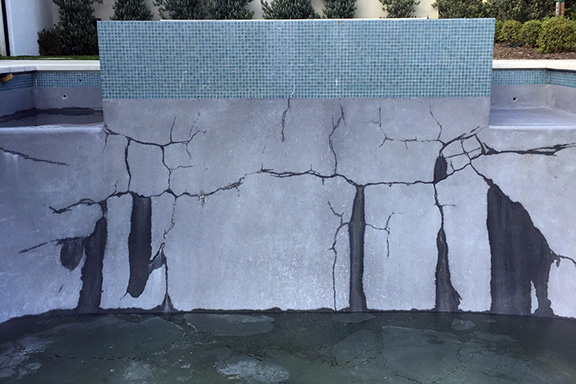In this video, we’re reviewing a job we performed on a fiberglass coated swimming pool. Behind the fiberglass coating, the homeowner had tried to repair the pool using Rhino Carbon Fiber Staples and 2-part epoxy and the pool continued to leak like a sieve. We’ve shown this over and over again, Carbon Fiber products do NOT offer the strength required to keep a crack from widening. They flex, they bend and even when coated with concrete, they fail to solve structural cracking. Do NOT use carbon fiber when you have a concrete crack – it’s a band-aid that will fail in as little as a year after spending money to install it.
In the video, you’ll see where we removed the sections of fiberglass that covered the cracks and leaks. We identified the full length of the crack and cut the area where we would install the patented Torque Lock Structural Staples. By placing them properly at 12 inch intervals, we added thousands of pounds of compression to either side of the structural defects, guaranteeing that the crack will never separate again, like it did when the homeowner used the carbon fiber staples from Rhino. Now that the garbage was removed from the previous repair attempt, we installed Torque Lock Structural Staples and covered the area with hydraulic cement, smoothing the surface to match equally.
We applied waterproofing material and reapplied a matching patch of fiberglass to create a smooth and even surface, worthy of any fiberglass pool owner’s needs. When filled, the homeowner is going to enjoy a lifetime of swimming in their pool, thanks to Torque Lock.
Allow us to state this – if you want to guarantee that your structural crack is repaired properly and that it won’t leak again, do not use Rhino Carbon Fiber products. They will always fail and it will cost you time and money over and over again.
















